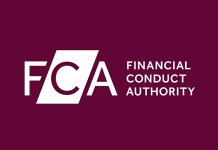A draft report published by Danuta Hübner, rapporteur for the Committee on Economic and Monetary Affairs at the European Parliament, has detailed changes to the disclosure regime for bonds, with large trades conducted on venue being deferred for four weeks and smaller trades on venues being deferred to the end of day.
“To simplify the current regime and ensure end-investors transparency, the rapporteur believes that the deferral regime for non-equities should be harmonised at Union level,” Hübner wrote. “The price and the volume of a non-equity transaction should be published as close to real time as possible, and the price should only be delayed until maximally the end of the trading day. Evidence from other jurisdictions indicates that shorter deferrals are beneficial for end-investors and – for certain categories of transactions – do not affect negatively the liquidity available in the markets. At the same time, in recognition of the need for liquidity providers not to be exposed to undue risks, the amendments allow for the masking of the price and volume of very large transactions for a maximum of four weeks. The exact calibration of the various buckets for the deferrals should be left to ESMA, but the proposed approach should ensure greater transparency while accounting for the different necessities of market participants.”
Vuk Magdalenic, CEO of Overbond says, “It is hard exactly assess the impact of the disclosure regime, because counterparties have different levels of trading in large ticket sizes. If you look at the total volume is traded, affected by the delay, it will be unlocking upwards of 20% on certain days.”
Matt Coupe, director of market structure EMEA at Barclays Investment Bank, “As a dealer is we want to have transparency in the markets and we want to make sure there’s effective price formation but critically, when we’re providing a piece of risk, we don’t want to see that pricing transparency creates price movements which significantly increase the risk when we take on a trade, because the end result of that is essentially wider prices to the client, as we have to start pricing in that move.”
The review has also removed pre-trade transparency requirements for voice and request-for-quote (RFQ) trading, with Hübner noting, “Market participants across the buy- and sell-side have consistently reported that the pre-trade transparency regime for RFQ and voice systems is of negligible added value to end users in fixed income markets. This has also been informally recognised by supervisors. The removal of these requirements, together with the introduction of the consolidated tape (CT), will remove an undue burden on market participants without affecting the levels of transparency in the market.”
The effect of the current regime on analytics would be affected by the type of use case for data notes Magdelenic.
“If you capture the daily traded volume over a historical horizon whether the reporting is in 15 minute increments or end of day is not going to have an effect. It definitely could affect intraday, live liquidity option that we have for electronic executions.”
The review has been welcomed by market participants, with several noting that getting transparency right will still require a lot of detailed understanding of the impact of greater disclosure on specific instruments.
“The key question we need to look at is, what instruments are we looking to put into scope?” says Coupe. “Then secondly, globally there’s a lot of focus on transparency with FINRA looking at elements of TRACE and the RFI from the US Treasury asking about Treasuries transparency. With lot of different conversations happening globally on a number of different instruments, we don’t want to have regulatory arbitrage.”
Defining this will be crucial in avoiding a repeat of previous efforts to increase transparency under MiFID II, which are largely seen to have failed.
“Stakeholders want to make sure we have transparency that works,” he says. “Is that by having a massive melting pot of instruments, which is going to drag you in all different directions? For me, the natural reaction is to reduce that, and take a more agile approach to transparency and focus on what is in your regional mandate. So if you’re a European Union, you focus on instruments which are under your jurisdiction; focus on European sovereigns and European credit. Then the majority of the liquidity will be sensitive to Europe and you’ve got a good understanding of effective transparency and how to deliver good deferrals without creating undue risk in the market.”
©Markets Media Europe 2025













